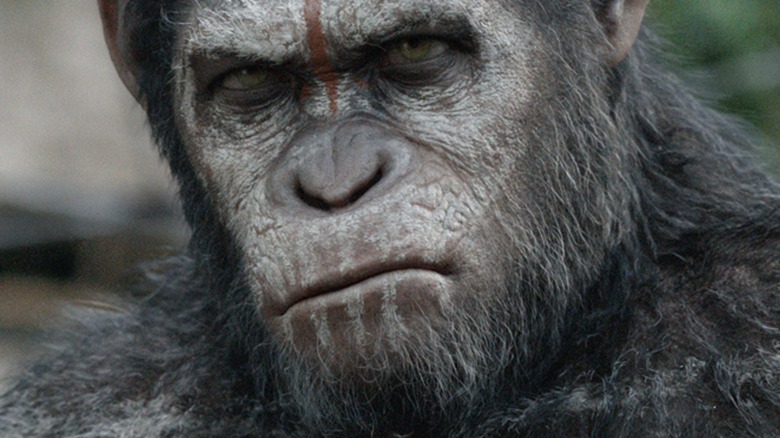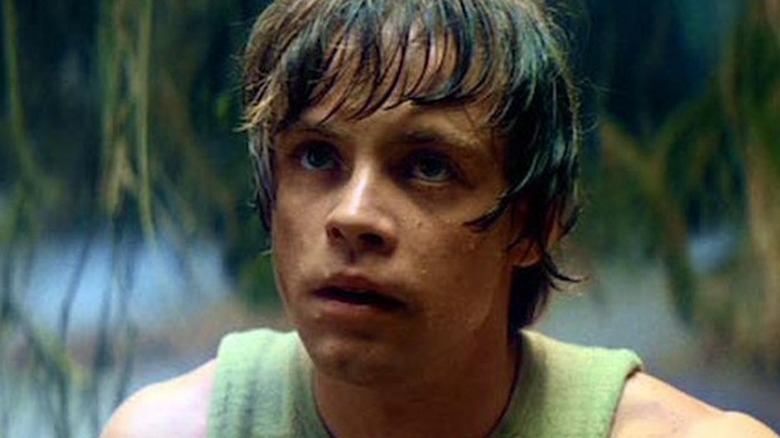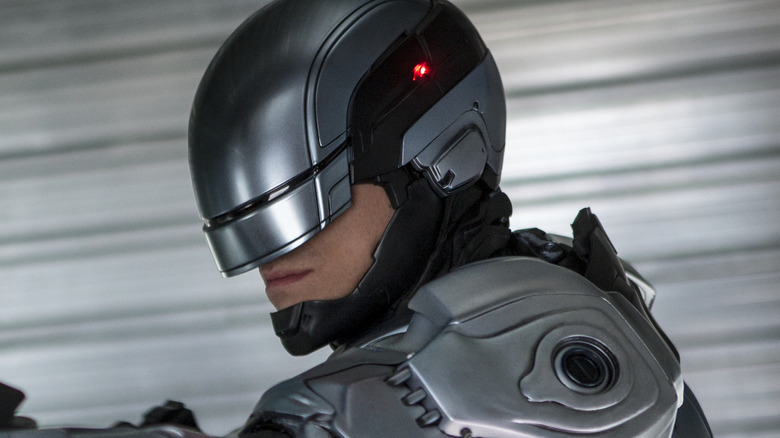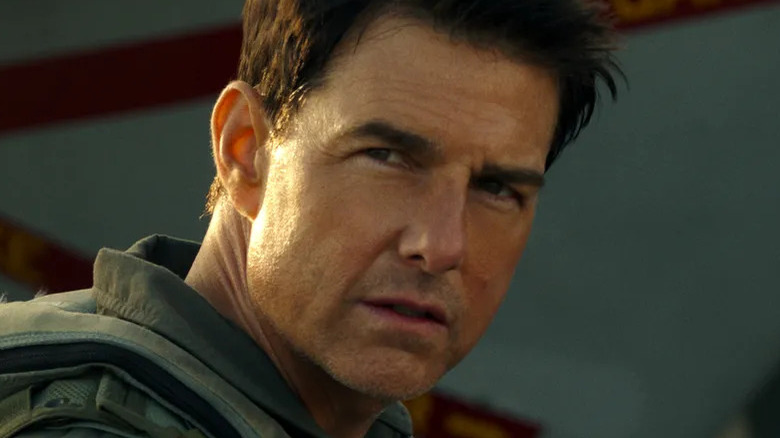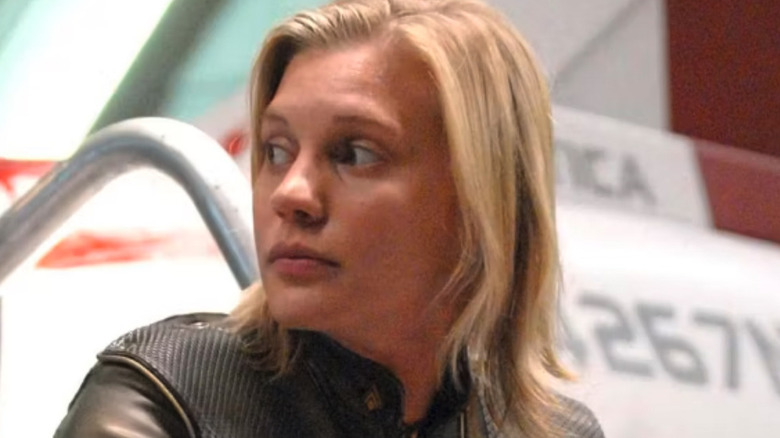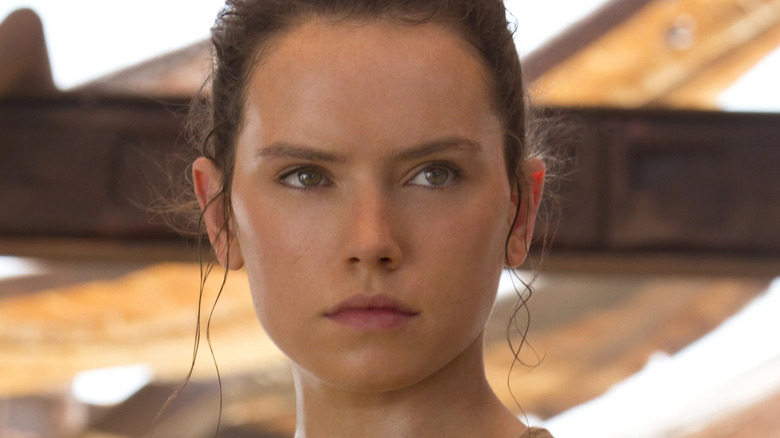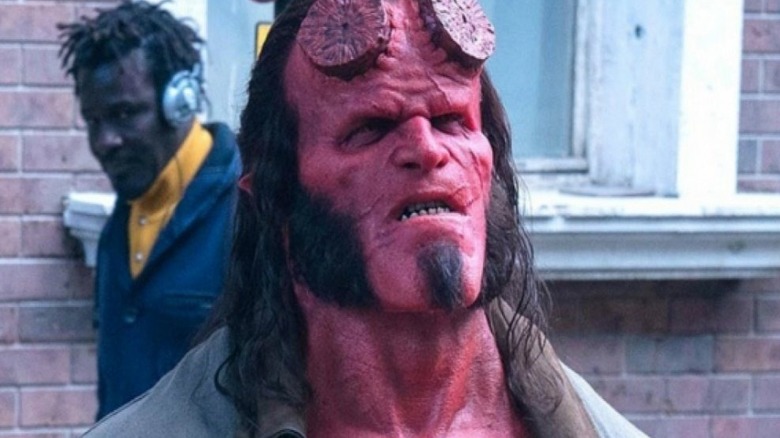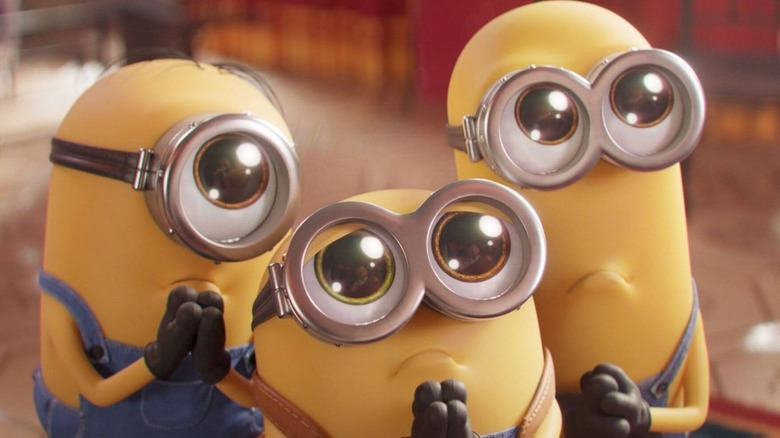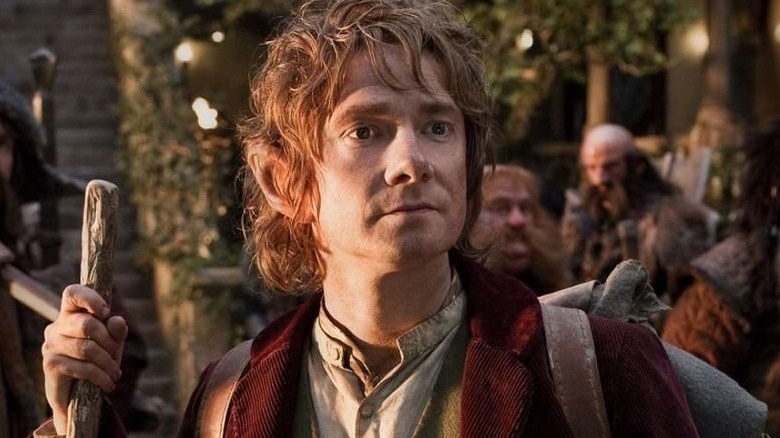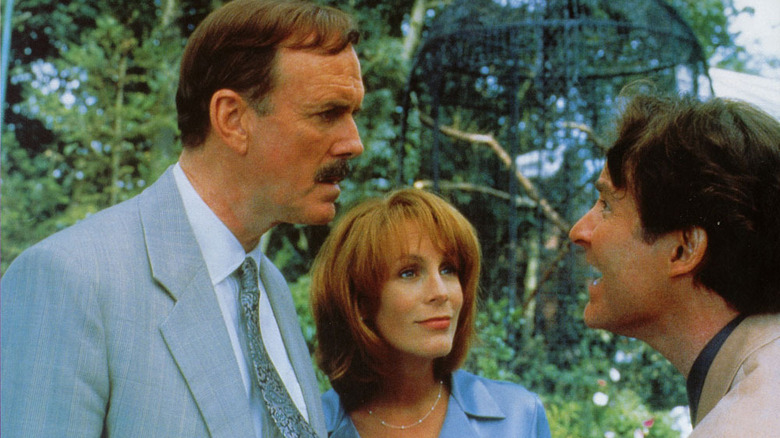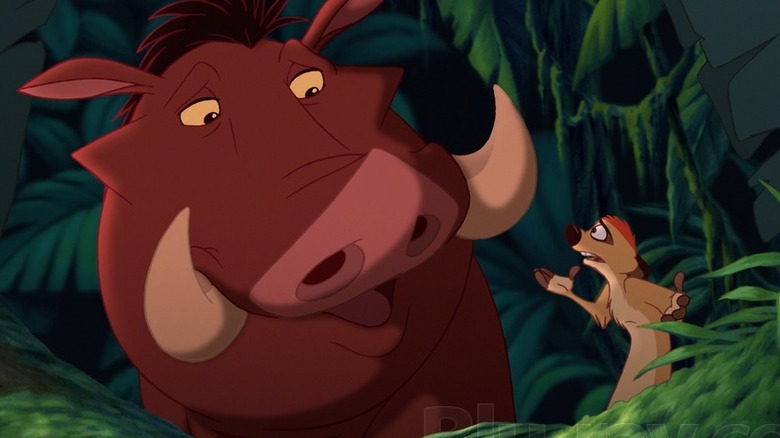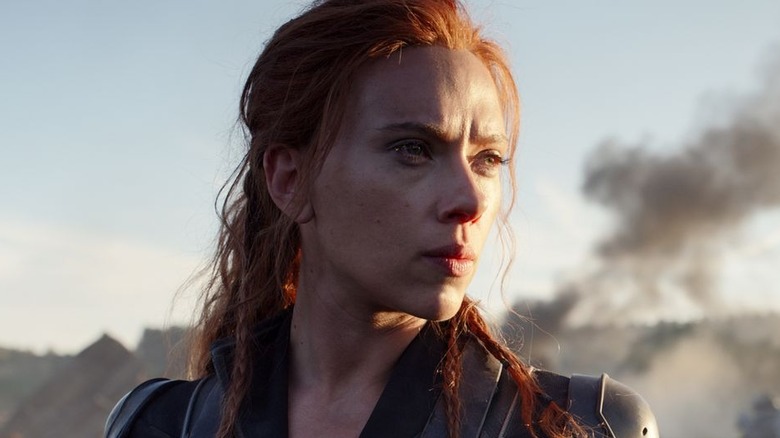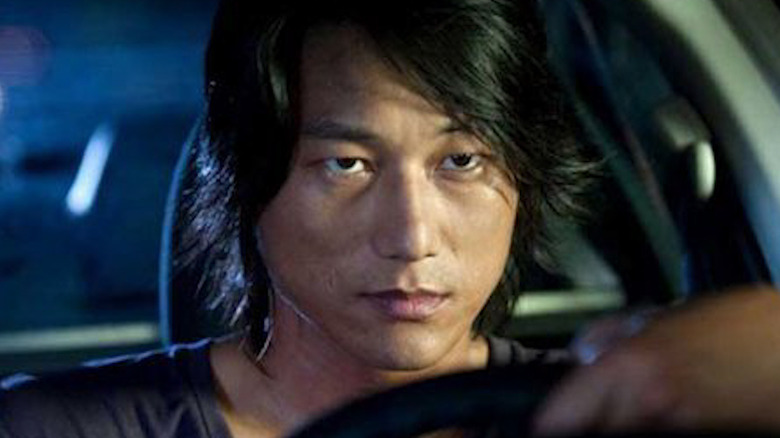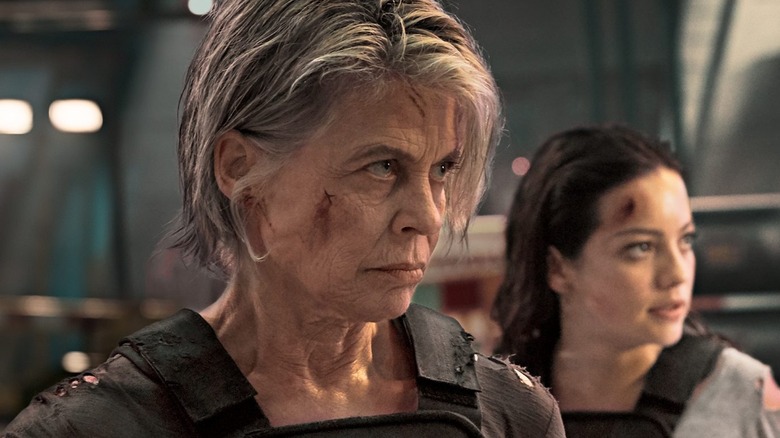Every Kind Of Sequel Explained
Believe it or not, there was a time when most movies in theaters were unique, standalone stories, rather than the endless string of sequels and franchises that we have become accustomed to seeing today. These days they're everywhere we look, on screens big and small, with film data researcher Stephen Fellows noting the precipitous rise in output, budgets, and box office grosses. Of course, not all sequels are made the same, and in fact there are a number of different kinds of sequels out there.
A movie can be updated or followed up with a direct continuation, a remake of a classic, or a reboot with an all-new cast. Prequels, spin-offs, spiritual successors ... they're all unique in their own ways. There are even franchises that have produced several different kinds of sequels within their own series, with the "Terminator" movies releasing a legacy sequel ("Terminator: Salvation"), a spin-off ("The Sarah Connor Chronicles"), a soft reboot ("Terminator: Genisys") and a retconned sequel ("Terminator: Dark Fate"). And yet despite all their attempts, the series has continued to flounder.
Some can fall into multiple categories, with a movie like "Jurassic World" being both a legacy sequel and a soft reboot. But why would studios choose to remake, reboot, or create a sequel or prequel? Well, we're here to explain every different kind of sequel out there, and maybe figure out the appeal of each.
The Simple Sequel
The most easily explainable type of follow-up is the simple sequel, an adventure that follows the same cast of characters in a new adventure that continues their story. While Hollywood has been making sequels almost since the movies were invented, they saw a boom in popularity in the 1970s. Films like "Jaws," "The Godfather," and a myriad of others received sequels thanks to their overwhelming popularity and massive box office success. It makes perfect sense that when a movie is a hit, the studio wants to sell more of the same. Filmmakers, too, can have fun telling new stories within a previously established series and exploring their characters even more.
But not all sequels are simple sequels, and in the early days of Hollywood many weren't. Because believe it or not, there was a time when Hollywood was unsure if audiences would be confused by even the simplest ongoing continuity at the movies, and so many sequels like the "Durango Kid" series from the 1940s and '50s had little connection between them (per Stephen Follows). Today, however, big movie studios are counting on that continuity to bring fans back again and again, and as long as the good box office results continue, they'll probably keep making simple sequels to your favorite franchise. Of course, if the dollars dip, they may look in another direction.
The Remake
Many moviegoers have been annoyed at the increasing number of remakes springing up in recent years, but the practice of making an old movie over again is nothing new. Some of the most famous movies of all time are surprising remakes, including Al Pacino's "Scarface," "A Fistful of Dollars," and even "The Maltese Falcon." If there are more of them, it's only because they're often effective at attracting new audiences.
It's a pretty simple idea: take a movie that succeeded and make it again for the next generation. In the early days of Hollywood, before the rise of television reruns or home video, films could be easily forgotten, making remakes an obvious choice for studios who wanted to reintroduce a popular story for a new fanbase. The problem that has arisen for viewers today is that movies receiving remakes like "RoboCop" and "Ghostbusters" are still popular thanks to being released during the days of home video. For many who re-watch the originals regularly, these remakes can seem unnecessary.
But sometimes, remakes are done to put a new twist or a modern sensibility on an old classic, and can have plenty of success doing it. "Ocean's Eleven" successfully turned a crime caper from 1960 starring Frank Sinatra and the Rat Pack into a slick, stylish action film in 2001 with George Clooney, Brad Pitt, and Matt Damon. It proved such a hit that two direct sequels followed, as well as a standalone sequel in "Ocean's 8." But more on that kind of sequel later.
The Legacy Sequel
The legacy sequel has risen to popularity in recent years, possibly thanks to prominence of streaming, where studios can now see just how popular older TV shows and movies really are. But rather than remake them or reimagine them, they've realized that audiences want to see direct sequels to their old favorites, with original stars returning in their iconic roles. This has led to sequels and revivals that come many years — even decades — later, birthing this new kind of sequel.
In 2008, Harrison Ford reprised his role as Indiana Jones for "The Kingdom of the Crystal Skull" nearly 20 years after the previous film, and returned as Han Solo after 32 years in "The Force Awakens." Likewise, Sylvester Stallone came back to play his two most popular roles, Rocky Balboa and John Rambo, in legacy sequels to those franchises decades later. Movies like "Tron Legacy" and "Mad Max: Fury Road" have followed up on cult favorites from a generation before. Meanwhile, on television, '90s favorites like "Full House" and "Roseanne" have been relaunched for new multi-season runs.
More recently, Tom Cruise, finally got the "Top Gun" sequel he'd been waiting for after more than three decades, with 2022's "Top Gun: Maverick." It became a billion-dollar blockbuster, proving that audiences may prefer direct legacy sequels over remakes, no matter how many years have passed.
The Reimagining
The "Planet of the Apes" franchise tried the remake route in 2000 with Tim Burton's film starring Mark Wahlberg. It wasn't a bad idea, as the franchise was ripe for an update with better effects and a more modern sensibility. But when it failed, the studio waited a decade and tried a different approach. "Rise of the Planet of the Apes" took the concept and deconstructed it, telling the story of how our world came to be populated by talking apes. Because the twist at the end of the original film had become so iconic, they didn't try to replicate it. It worked to the tune of $481 million, spawning a successful series of its own.
When reviving the 1970s sci-fi TV series "Battlestar Galactica" in 2004, producer Ron Moore completely reimagined the concept. Though the characters were all there, they were often newly characterized, while the series' mythology was reworked to include modern social themes and more contemporary science fiction ideas. The family friendly tone was also flipped to become a dark and gritty war drama. It succeeded because the original was more of a cult classic, whose audience may have been more accepting of a new interpretation. Trying to reimagine a beloved franchise like "Star Wars," however would surely be more controversial, which is why Disney and Lucasfilm went a more straightforward route for its 2015 return.
The Soft Reboot
The soft reboot often fits into several other kinds of sequel categories (via TV Tropes). They're in continuity with previous films, so they could be considered simple sequels, but they're usually released many years after the previous entry, qualifying some of them as legacy sequels too. But one unique quality of the soft reboot is that it typically features a story — including individual plot beats — that closely mirror an iconic previous movie in the series, making it almost a remake. They also often bring back one or more classic characters to pass the torch to a new generation, connecting it to earlier films and bringing back audiences who still love the original. The best and most recent examples of this are "Star Wars: The Force Awakens" and "Jurassic World."
"The Force Awakens" brought back Harrison Ford and Carrie Fisher from the original "Star Wars" trilogy, while rehashing the story of a young hero discovering their Jedi powers and helping a group of rebels destroy a planet-killing doomsday weapon. "Jurassic World," released more than a decade after the previous film in the franchise, restarted the series with a nearly beat-for-beat plot retread of the original "Jurassic Park" but with an all-new cast, kickstarting its own series of movies. "Ghostbusters: Afterlife," which followed the financial failure of a 2016 remake, also followed this formula. For studios, the soft reboot can be a "best of both worlds" approach, refreshing a series with a new cast while bringing back fans of the original who might otherwise be disdainful of remaking a fan favorite.
The Reboot
The reboot is the complete restart of a series, erasing everything that has come before, but telling what is mostly the same story, with some notable updates and changes. Comic book movies are perfect for reboots because their source material typically has a wealth of stories with different styles and tones, and their characters are often timeless, appealing to a wide range of people. Batman could star in a light-hearted kids movie, an over-the-top superhero adventure, or a gritty crime drama, and each would be equally valid and attractive to large groups of moviegoers.
Why a reboot, though? Typically, reboots are the choice when a franchise has lost steam with audiences. Perhaps the original cast has aged out of their roles, but the original premise is still strong. A little time off to give fans a breather from the franchise, while starting over with a fresh continuity for modern audiences can often breathe new life into a stale series. Perhaps they simply want to escape decades of confusing continuity that hampers writers — and audiences — with loads of backstory to keep straight.
Some reboots might even use science fiction tropes like alternate realities to connect it to its original in a clever way. Such was the case for the 2009 relaunch of "Star Trek" from J.J. Abrams, "X-Men: Days of Future Past," and "Terminator: Genisys." All of those films use time travel to connect to previous entries, and allowed a beloved actor from the original to return while still creating a new continuity.
The Spin-Off
Another fairly simple and easily understandable kind of sequel, the spin-off might also be one of the most popular. Offshoots of popular and successful franchises, spin-offs are a way for studios to grab more of the same audiences with an entirely new series, be it on TV or film. Whether sparked because the series' main stars may not want to return, or because a supporting character proves to be a breakout star and fan favorite, a spin-off expands on the story with a new angle, often with a different tone and style all its own.
Some notable and more famous examples are "Minions," based on the impish yellow bean-shaped creatures from "Despicable Me," and "The Scorpion King" starring The Rock, who had played the title character as an antagonist in "The Mummy Returns." But TV might be where spin-offs are most prevalent, with the 1970s hit "Happy Days" receiving at least six spin-off shows. In fact, some of the most successful TV series ever are spin-offs, including "Better Call Saul," "Frasier," and "The Jeffersons." Spin-offs on the small screen have given rise veritable franchises themselves, like "Law and Order," "CSI," and "Star Trek."
Often, films will receive spin-offs on television, continuing the story at home week after week. This is common in kids programming, with hit movies becoming animated series, but it's also happened plenty of times with more adult fare.
The Prequel
The term "prequel" was popularized by the second "Star Wars" trilogy that began in 1999. But prequels have been around decades longer, with the first that many will recognize being "Indiana Jones and the Temple of Doom," set several years before Harrison Ford cracked the whip in "Raiders of the Lost Ark." Buy why make a prequel instead of a sequel? There are a few reasons why filmmakers might choose a prequel, and for "Temple of Doom," it was simple: George Lucas wanted to avoid reusing Nazis as the villains, which became easier by setting the film just a few years before the outbreak of WWII (via Empire).
Of course, the more common reason is to explore a character's backstory that's been hinted at in an earlier film, or to see them return when they've been killed off in an earlier story. Speaking of Harrison Ford, his "Star Wars" character Han Solo received his own prequel film in 2018, following the character's death three years earlier. This self-titled prequel — which could also be considered a spin-off — explores the famous smuggler's history that had been talked about on and off screen for decades.
For a studio, the appeal is pretty straightforward, as prequels like "The Hobbit" trilogy can offer up an entire new series of films featuring some of the same beloved characters, many of whom had seen their end in the previous entries. But prequels can often be divisive, as the stories are restricted by future continuity that they have to keep up with.
The Spiritual Sequel
One of the most enigmatic kinds of film follow-ups, these movies have no direct story connections, so you'd be forgiven for thinking they're not related at all. In some ways, they aren't, but these unique kinds of sequels are called spiritual successors or spiritual sequels (per TV Tropes). They're usually produced by the same filmmakers and designed to attract fans of an older film. They also typically feature many of the same actors, often in similar roles, which helps to bring the audience back for an all new story.
The best example of this sub-sub-genre is the 1997 comedy "Fierce Creatures," which reunited the entire cast of "A Fish Called Wanda" in new, unrelated roles, for an entirely separate farcical film. But the similar tone and comedic performances brought back fans of "A Fish Called Wanda" and the two movies are often mentioned in the same conversation, as if they were canonically connected.
Similarly, the 2001 comedy "Made" brought Jon Favreau and Vince Vaughn back together to recapture the magic of their surprise 1996 hit "Swingers," with Favreau again writing and the duo playing similar characters. On the other end of the spectrum, Sam Raimi's "Oz the Great and Powerful," which told the origins of the man behind the curtain, wasn't related to the classic 1939 film "The Wizard of Oz" for legal reasons, nor did it have anyone from the original involved. But in intentionally attempting to evoke the same look, feel, and tone, it became a spiritual prequel.
The Midquel
One of the most unusual (and uncommon) kinds of follow-up films are known as a midquels. These strange kinds of sequels tell a story within the timeframe of an existing film, parallel to the original story, and show new elements the audiences never saw. Sometimes just a portion of the movie overlaps with the previous entry, but sometimes it takes place entirely within the span of the story we've already seen, in a hidden gap of time. Disney has become famous for these kinds of sequels, with the most noteworthy example being "The Lion King 1/2," which saw side characters Timon and Pumbaa take the spotlight in a tale that showed what they were up to during the periods of "The Lion King" when they weren't on screen.
Other Disney examples include "The Fox and the Hound 2" and "Bambi II," but the House of Mouse isn't the only studio making midquels. Plenty of zombie franchises have crafted these kinds of sequels, with the television series "Fear the Walking Dead" taking place at the same time as events in its parent series, "The Walking Dead." The 2022 film "Army of Thieves," meanwhile, took place during the opening timeframe of its predecessor, "Army of the Dead." Both "Fear the Walking Dead" and "Army of Thieves" feature characters that had appeared in their earlier entries, helping to more closely connect them and attract those who enjoyed the original.
The Interquel
No, we're not making this one up, we swear. As detailed in Mark J.P. Wolf's book "Building Imaginary Worlds: The Theory and History of Subcreation," the oddly-named interquel is both a sequel and a prequel, a story that is set in between two other films, such as "Rogue One: A Star Wars Story," or the 2021 Marvel Cinematic Universe entry "Black Widow." The 2016 "Star Wars" film starring Felicity Jones was set almost two decades after the saga's third episode, the prequel "Revenge of the Sith," but just before the events of the original movie, "Episode IV – A New Hope." It fills in an important gap in the story of the Rebel Alliance's fight against the evil Galactic Empire that had only been hinted at before.
Filling in a gap that's been suggested but not seen is a hallmark of such interquels, with "Black Widow" revealing what happened to the character after the events of "Captain America: Civil War" and before "Avengers: Infinity War," the latter of which had given a handful of on-screen hints to off-screen adventures exposed in her later solo outing.
Interquels have become more popular over the years as filmmakers have looked for ways to tell new stories that would attract previous audiences of bigger franchises. Other examples include "Star Trek: Discovery" – set after the previous prequel "Enterprise" and before the original "Star Trek" series — and "Alien: Covenant," which helped bridge the narrative and thematic gaps between the classic "Alien" and its legacy prequel "Prometheus."
The Standalone Sequel
A standalone sequel is less than simple. It may feature the same characters in similar stories from another film, but mention of the wider universe or past movies in the series. "Mallrats" is often considered a standalone sequel to "Clerks," and "U.S. Marshals" is a standalone sequel to "The Fugitive." That film, led by Tommy Lee Jones, focuses on the character of Sam Gerard while telling a similar story of a wrongly accused criminal on the run. Standalone sequels usually feature a new cast in a similar story with only a loose connection to its predecessors. Perhaps the perfect example is the 2006 sequel "The Fast and the Furious: Tokyo Drift."
While the first two films in that series had been a big success, the studio had trouble getting star Vin Diesel back behind the wheel for a third (though they did wind up convincing him to cameo). As a result, they recruited an entirely new cast and crafted a story almost completely unrelated to the first two movies. Sadly, it wasn't as big a hit as hoped, which forced Universal to pony up to get Diesel to return for subsequent sequels. But the lead character of Han proved popular, which presented a problem when the studio wanted him to return for future installments, because his character had been killed off. As a result, "Tokyo Drift" was retconned to take place after the events of "Fast 6" and partially during "Furious 7," which retroactively makes the film not just a standalone sequel, but a midquel and an interquel as well.
The Retconned Sequel
Though not the most recent phenomenon, retconned sequels — movies that ignore earlier sequels — have gained notoriety with the release of movies like 2019's "Terminator: Dark Fate" and the 2018 reboot of "Halloween," both of which skipped over previous sequels to serve as direct follow-ups to earlier movies. But they certainly weren't the first instances of sequels attempting to act as if earlier entries in a series never happened. "Highlander: Endgame" over-wrote the second and third movies in the series, while "Universal Soldier: Regeneration" replaced the previous sequel "Universal Soldier: The Return." In fact, the 2018 revival wasn't even the first time that the "Halloween" franchise had erased earlier installments, with "Halloween H2O" ignoring multiple sequels in the series itself.
As for the appeal, the retconned sequel is likely attractive to filmmakers who don't want to be beholden to sequels they had nothing to do with. In the case of "Terminator," creator James Cameron produced "Dark Fate" and happily ignored "Terminator 3" and its two follow-ups, with which he'd had no involvement. At the same time, studios probably love the idea of returning a franchise to its roots, and producing a direct sequel that ignores previous stories that were not as well received. At the very least, it's easy for them to market these new retconned sequel movies to appeal to fans of the most iconic entry in the series.
The retconned sequels aren't going away, either, with a "RoboCop" sequel in the works that would wipe out "RoboCop 2," "RoboCop 3," and the 2014 remake.
